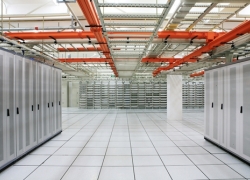The secret to strong colocation management is to stay cool
The secret to strong colocation management is to stay cool

Data center operators in colocation facilities are in the tough spot of needing to comply with service-level agreements (SLAs). Any type of equipment failure in the data center that negatively impacts a client is bad for business.
To that end, one of the biggest dilemmas faced by colocation managers is maintenance of allowable environmental conditions and, more specifically, temperature. All data center managers must concern themselves with facility temperature to prevent overheating of equipment, hence the existence of computer room air-conditioning (CRAC) units.
However, colocation facilities have a unique set of circumstances that can make cooling efforts somewhat difficult. Let's look at what they are, and how they can be mitigated.
The shift toward metered power
"Efficient cooling is as important to energy sustainability as it is to business sustainability."
In a colocation facility, the tenant doesn't just pay for the space. They're also responsible for paying for the electricity that is needed to power their equipment. In the past few years, colocation facilities have increasingly relied on electricity metering to determine how much energy a client is using, according to Green House Data. This makes it easy to accurately bill clients for the true amount of resources being consumed, not the least of which is the energy used to cool the facility.
As a result of this model, cooling efficiency suddenly becomes a lot more important. This is because a streamlined cooling and airflow system in the data center that minimizes the amount of energy being used for the CRAC units could hypothetically lower the cost for some clients by ensuring that no cool air is going to waste. Conversely, constantly dialing up the cooling capacity increases operational expenses in the form of energy costs, which could result in thinner profit margins for the colocation facility.
Efficient cooling is therefore as important to energy sustainability as it is to business sustainability. As TechTarget contributor Clive Longbottom so aptly explained, "The easiest way to save money is to reduce how many CRAC units are running."

Responsive cooling is necessary
Another issue many colocation managers face is that different clients may have varying cooling capacity needs based on the equipment being used, and how hard it's working. For instance, there may be multiple high-density sectors of a facility that are exceeding allowable temperature thresholds due to the extra heat being created by powerful servers. One option might be to use more CRAC units to compensate, but the result will be significantly higher energy expenses, and it could mean that nearby lower-density cabinets could end up getting more cool air than is necessary. Alternatively, some low-density sectors of a facility may turn into hot spots because of their placement relative to the cool air source. The instinct might be to up the cooling capacity, but that would be a costly mistake.
A better alternative for both of the above scenarios is to use responsive cooling solutions. Geist ActiveAir Cooling, for example, relies on pressure sensors that detect how hard server fans are straining to maintain allowable temperatures. ActiveAir then reacts to this information by increasing the rotation-per-minute of its cabinet or rack-based fans to lessen the stress on the server – thereby improving airflow to keep temperatures down without having to turn CRACs up.
Contact Geist today to learn more about ActiveAir.



